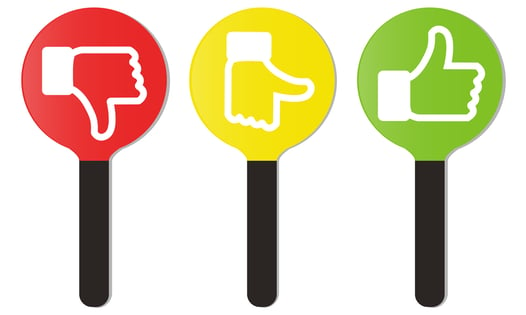Keap Sales Metrics That Matter – Lead Scoring

What is lead scoring and how do you get your sales team to engage with it?
Key Takeaways
- Lead scoring indicates how valuable a lead is at a given time, helping your sales team focus on leads who are most ready to convert
- Steps to start lead scoring:
- Map out the customer journey
- Tag leads as they take steps
- Weight actions accordingly
- Scoring can also be used to measure the customer experience and sales metrics to help you facilitate employee engagement contests
- The Keap integration with Crewhu helps you track metrics that matter, like key sales metrics
Your sales and marketing teams always need to work together to bring in business and retain current customers. If you’re finding that your lead generation tactics just aren’t leading to a sales increase, it may be time to reevaluate your processes and the metrics you’re tracking to gain more visibility.
Sometimes the truth hurts: Only 23% of sales professionals say they are constantly getting sales-ready leads from all the effort their marketers are putting in. This means teams are wasting time, money, and energy reaching out to people who just aren’t ready to convert or make a purchase.
When you need a better approach to lead generation, ensuring your salespeople work on the leads that are most likely to convert, lead scoring may be the answer.
What is lead scoring?
A lead score is a metric that tells you how valuable a lead is or where they are in the sales funnel: The closer to converting, the more valuable they are. Lead scoring is a big benefit of using automation in marketing. Customer relationship management (CRM) platforms open up a lot more information about customers, including their behaviors and how they interact with you, and it can all be tracked automatically.
Here’s how lead scoring works: You essentially score all of your leads based on their interactions with your business so far. These scores tell you where they are in their journey and what steps you can take to keep them moving. Lead scoring is a form of segmentation, where you group leads into different categories. Are they still in the research phase? Are they ready to make a purchase?
Knowing this valuable information helps your sales team avoid wasting time on leads that aren’t ready to take the leap and buy.
Lead scoring helps you view what precise actions each lead has taken toward the end result of making a purchase. Based on this data, a platform like Keap automatically uses icons to indicate where leads are in this journey. You can easily see which leads have a high score, and those are the people you need to call to get them to convert.
How to start lead scoring
Now, how can you make sure you’re doing it right? Follow these steps to create a successful lead scoring approach:
- 1. Map out the customer journey
First, map out the journey your leads will take toward converting. Even if every lead doesn’t follow this trajectory exactly, create a rough path. Include specific steps that you can later align with how you score leads.
- 2. Tag leads as they take steps
Once you know the general path your leads will take, you can start categorizing. Tag people in your system as they take each step. These tags then influence their lead score, which tells you where they are in the journey and what action you should take, if any.
- 3. Weight actions accordingly
Remember that, just because a lead took an action, doesn’t mean it should be treated like every other action. Some steps give you more value than others. Make sure you’re able to weigh each possible step accordingly so their lead score accurately reflects their value and not just the number of actions taken thus far.
Scoring for employee engagement
Scoring is an important approach to tracking metrics, too, beyond your leads. You can also use scoring techniques to engage employees with contests and assess performance by measuring the customer experience.
Within the Crewhu platform, you can view customer experience scores which are based on certain criteria, including an automated metric and a weighted multiplier. This leads to the score. You can then correlate these scores with the team members included in the customer interaction.
The process of scoring opens up new ways of integrating business KPIs that strengthen the visibility you have into your business while improving customer and employee satisfaction.
Why go with Crewhu?
Using Crewhu, you can implement contests via gamification and enhance the results with scoring techniques. Our Keap integration helps you track additional sales metrics that are also great starters for employee contests, giving engagement, productivity, and motivation a boost.
These metrics include the number of calls, appointments, opportunities, and opportunities closed as won, so you can see how the business is doing in addition to each salesperson. Then, set up rewards for contest winners who are hitting targets or going above and beyond. Within the platform, you can combine these Keap sales metrics and create customized scores that will facilitate your employee contests.






